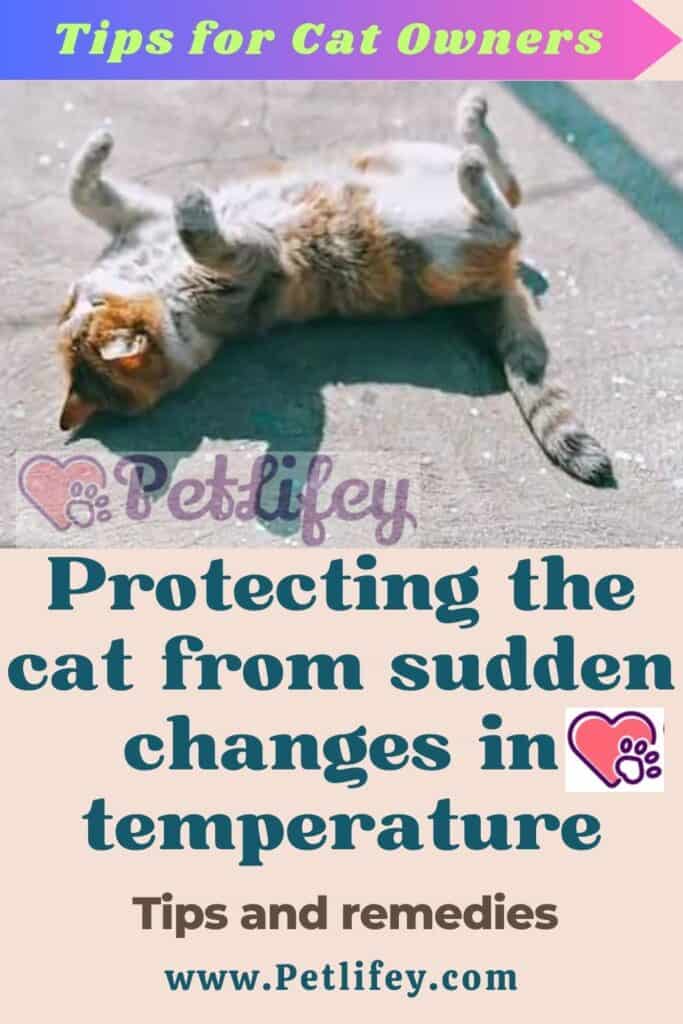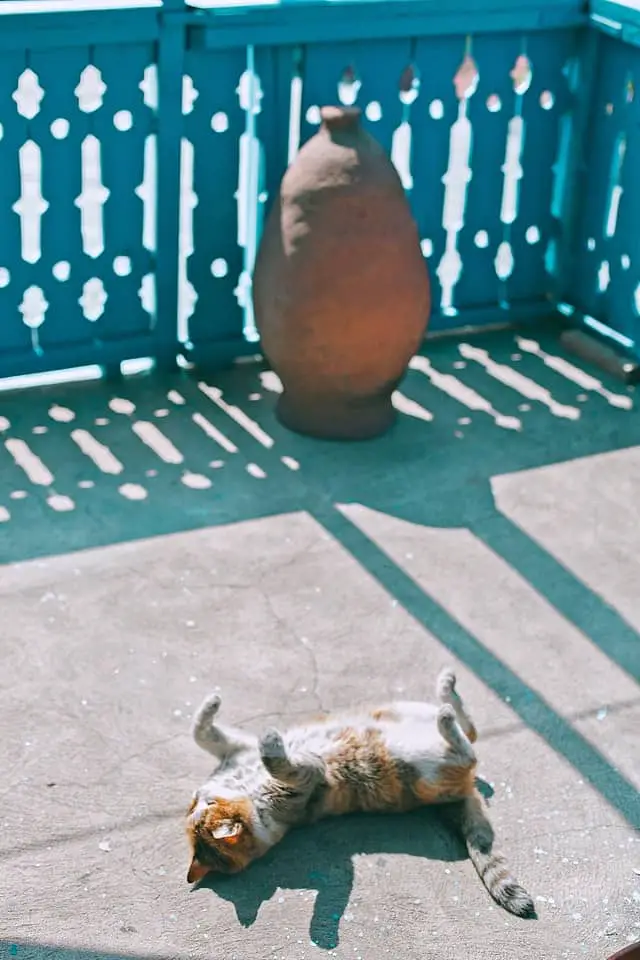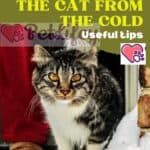
Is your cat’s health at risk due to the change of season? Here’s how to protect your beloved kitty from sudden changes in temperature.
When the cold is upon us and we begin to feel the humidity and the coolness of the evening hours, then the time has come to say goodbye to the hot season to make room for the winter one. But what does the change in temperature mean for our animal friends? The answer must not be limited only to going out or walking outside the home, since a change, especially sudden, in the temperature can lead to illnesses and colds for us as well as for our pets. Here’s how to help them cope better with this transition period.
From summer to autumn (and vice versa): what changes?
It is true that cats generally love to be ‘couch potatoes’: they are always at home even if, as soon as they get the chance, they sneak out into the garden to enjoy the outdoors. Or even if inside the house, it is easy for the cat to get behind a window to warm up in the sun, precisely because he loves the sensation of warmth on the skin. Will all this end in the winter period? Not necessarily, let’s say there will be some changes!
What to do with your cat when it’s raining outside? It is obvious that it is highly inadvisable to let the cat go outside when it rains, just to prevent it from returning to the house soaking wet and catching a cold. At the same time, however, in the less rigid afternoons or when the day offers a few hours of afternoon sun, let him go out and go home before the humidity drops.
Changes in temperature: how to protect the cat
It is essential to know all the right tips to keep our cat safe from cold and sudden changes in temperature: in fact, in those periods of transition from one season to another, these are precisely the main causes of his ailments. Unfortunately, this will not give you the certainty that the cat does not fall ill with a fever, but at least we do our best to avoid it!
Baby bath? Yes, but not too much: it is true that the cat is a very clean animal and loves to take care of its body by licking off all the residues from the fur with its own tongue. But if we like to bathe him, let’s limit ourselves to once every two months and with particular attention to some details. In fact, the cat could stay wet or get out of the water warm and get a breath of cold air from a window or a door suddenly wide open.
‘Limited’ outings: if it’s raining outside, it’s better not to run out to play. If, on the other hand, a few hours of sunshine are allowed even during the coldest winter, then now is the time to take advantage! And maybe, before opening the ‘escape route’, let’s have him play a few minutes at home with a ball or an object with the thread that he will have to chase: this will stimulate blood circulation and the impact with the external temperature will be less traumatic.
Hair care: it is important to know how to take care of your cat’s coat all year round, not just during the change of seasons. But usually in the periods more subject to temperature changes it is recommended to brush it well: this will not only help to eliminate dead hairs close to falling, but also to regenerate the coat. In fact, the new hairs, no longer having the older ones to cover them, will be free to go out and better protect our cat from the dangers of the cold. The skin will be oxygenated and the coat will also appear visibly stronger and thicker.
General cleaning of his things: you may be wondering why we need to thoroughly sanitize our cat’s accessories. Apart from the fact that cleaning is always recommended at any time of the year, in periods of sudden changes in temperature the cat is particularly sensitive to parasites and bacteria that can easily infest his things, including litter and various bowls.
Warm environment but … not too much: in fact, if we think that the best solution to protect our cat is to guarantee a constant temperature in the house at 40˚ we are completely out of the way! In fact, the environment in which he lives or in which he spends most of his time, must never be excessively hot for two reasons: the first is because it would dry out the cat’s respiratory tract, the second because it would expose him to a greater risk of blows air.
Integrate nutrition: if in summer some fresher food and less abundant portions are recommended, in winter a diet rich in nutrients, fats and proteins is more suitable. It is also highly recommended to supplement the meal with the use of some vitamins. On the advice of the veterinarian, we can buy products made especially for our cat, which contain Omega 3, Omega 6 and Krill, for healthier skin and a thicker and shinier coat.
Sudden changes in temperature: the ailments of the period

During periods of the year subject to sudden changes in temperature, cats and all pets are subjected to this stress from heat to cold and vice versa, so the cat’s respiratory system is quite sensitive in this period. This particular susceptibility in the respiratory tract results in a lowering of the immune defenses. Here are the main ailments of our cat that we could find ourselves, alas, to treat:
Cough
Coughing in cats is often accompanied by sneezing and episodes of vomiting, and conditions of loss of appetite may also occur. We avoid do-it-yourself remedies and we absolutely do not think to give the cat over-the-counter drugs intended for us humans: in fact they may contain paracetamol, codeine and other narcotics that expose the cat to the risk of poisoning. Let’s rely on the treatments recommended by our trusted veterinarian, who will certainly prescribe specific medicines for our cat.
Cold
Is there a runny nose, red eyes, frequent discharge of mucus and other secretions from the nose and mouth? It is likely that the cat has a cold. It is therefore better to submit the cat to a veterinarian’s visit, but also to stimulate its appetite with non-dry meals, keep it in humid environments to free the nasal passages and, always under medical prescription, the use of anti-inflammatories, antihistamines and antibiotics.
Bronchitis
It is an inflammation and irritation of the bronchi, which causes the cat not only repeated sneezing, but also excessive salivation, nasal discharge, loss of appetite, vomiting, excessive weight loss and high temperatures. The treatment usually recommended for bronchitis in cats is based on antibiotics, or targeted pesticides if the disease is of infectious origin.
Pneumonia
In addition to all the symptoms described above, in the case of pneumonia you will also hear labored breathing and a sinister noise, as if the cat cannot get enough air to breathe. Once the disease has been diagnosed, the same expert will be able to assess the severity of the case and recommend oxygen therapy or antibiotic treatment. Furthermore, it will be necessary to set up continuous checks and tests to exclude the danger of new episodes of pneumonia in the cat that is subject to this type of pathology.
| Cat Breeds | Cat Food and Nutrition |
| Tips for Cat Owners | Cat Training |
| Cat Behavior | Kittens |
| Cat Health | Cat Grooming |
| Cat Adoption | Travel with Cat |
| Holiday Season- Cat |
So we pay close attention to the changes of season, but we do not keep the cat locked in the house like a prisoner: freedom yes, but with caution!






